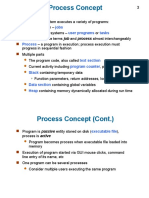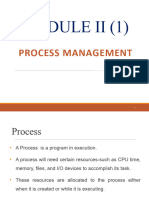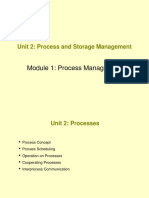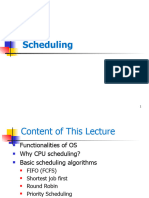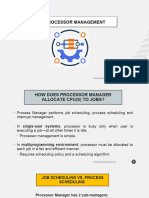0% found this document useful (0 votes)
16 views12 pagesOS Mod2
The document provides an overview of processes in operating systems, detailing their sections, states, types, and the role of Process Control Blocks. It discusses process scheduling, context switching, and the importance of threads, including various threading models and synchronization techniques. Additionally, it covers critical section problems, solutions like Peterson's algorithm, semaphores, and classic synchronization issues such as the Readers-Writers and Dining Philosophers problems.
Uploaded by
shivi srivastavCopyright
© © All Rights Reserved
We take content rights seriously. If you suspect this is your content, claim it here.
Available Formats
Download as DOCX, PDF, TXT or read online on Scribd
0% found this document useful (0 votes)
16 views12 pagesOS Mod2
The document provides an overview of processes in operating systems, detailing their sections, states, types, and the role of Process Control Blocks. It discusses process scheduling, context switching, and the importance of threads, including various threading models and synchronization techniques. Additionally, it covers critical section problems, solutions like Peterson's algorithm, semaphores, and classic synchronization issues such as the Readers-Writers and Dining Philosophers problems.
Uploaded by
shivi srivastavCopyright
© © All Rights Reserved
We take content rights seriously. If you suspect this is your content, claim it here.
Available Formats
Download as DOCX, PDF, TXT or read online on Scribd
/ 12









